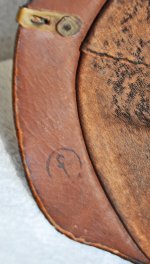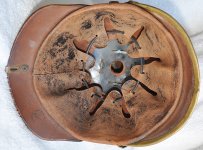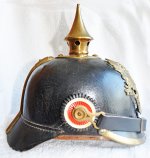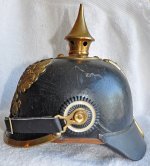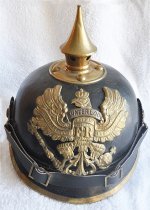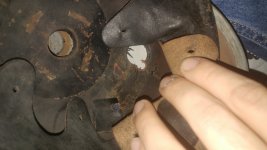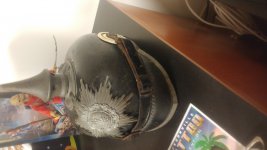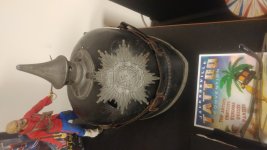Steve Nick
Well-known member
These helmets caused confusion on the part of history challenged British troops when they encountered Germans wearing “British” battle honours. They were unaware that the Kingdom of Hanover had been a British possession since 1714 when George Louis of the House of Hanover ascended the throne of Great Britain as George 1.
During the Napoleonic Wars the Electorate of Hanover was dissolved after its occupation by Napoleon in 1803. Thousands of expatriate Germans formed “The King’s German Legion” as a unit of the British Army from 1804 to 1816. The Legion fought with distinction in several campaigns primarily in The Peninsular War and the Waterloo campaign under Wellington.
Hanover reverted to German control in 1837 on the accession of Queen Victoria as Salic Law excluded accession to the throne by a female while any male of the dynasty survived. Consequently, her uncle Ernest Augustus the eldest surviving son of George III, succeeded to the throne as King of Hanover. Hanover unfortunately, backed the losing side in the Austro-Prussian War of 1866 and became a Prussian province.
On January 24, 1899 Kaiser Wilhelm II authorized the addition of battle honours for the Napoleonic Wars to Hanoverian and Nassau regiments that traced their heritage back to The King’s German Legion.
The following regiments wore this “Waterloo” bandeau on their helmet Wappen.
74th Regiment - 1st Hanoverian Infantry
77th Regiment - 2nd Hanoverian Infantry
78th Regiment - 1st East Frisian Infantry "Herzog Friedrich Wilhelm von Braunschweig"
164th Regiment - 4th Hanoverian Infantry
165th Regiment - 5th Hanoverian Infantry
This helmet is unmarked with exception of a lowercase f on the rear visor, which as far as I can tell is a marking from the B.I.A. (Bekleidungs Instandsetung) which was a repair unit operating within the Bekleidungsamt and indicates “Felddienstbrauchbar” (Field/Service useable).
This seems odd as there is no marking indicting that the helmet was ever issued. Consequently, I can’t attribute the helmet to a specific regiment among the five candidates listed above.
During the Napoleonic Wars the Electorate of Hanover was dissolved after its occupation by Napoleon in 1803. Thousands of expatriate Germans formed “The King’s German Legion” as a unit of the British Army from 1804 to 1816. The Legion fought with distinction in several campaigns primarily in The Peninsular War and the Waterloo campaign under Wellington.
Hanover reverted to German control in 1837 on the accession of Queen Victoria as Salic Law excluded accession to the throne by a female while any male of the dynasty survived. Consequently, her uncle Ernest Augustus the eldest surviving son of George III, succeeded to the throne as King of Hanover. Hanover unfortunately, backed the losing side in the Austro-Prussian War of 1866 and became a Prussian province.
On January 24, 1899 Kaiser Wilhelm II authorized the addition of battle honours for the Napoleonic Wars to Hanoverian and Nassau regiments that traced their heritage back to The King’s German Legion.
The following regiments wore this “Waterloo” bandeau on their helmet Wappen.
74th Regiment - 1st Hanoverian Infantry
77th Regiment - 2nd Hanoverian Infantry
78th Regiment - 1st East Frisian Infantry "Herzog Friedrich Wilhelm von Braunschweig"
164th Regiment - 4th Hanoverian Infantry
165th Regiment - 5th Hanoverian Infantry
This helmet is unmarked with exception of a lowercase f on the rear visor, which as far as I can tell is a marking from the B.I.A. (Bekleidungs Instandsetung) which was a repair unit operating within the Bekleidungsamt and indicates “Felddienstbrauchbar” (Field/Service useable).
This seems odd as there is no marking indicting that the helmet was ever issued. Consequently, I can’t attribute the helmet to a specific regiment among the five candidates listed above.

